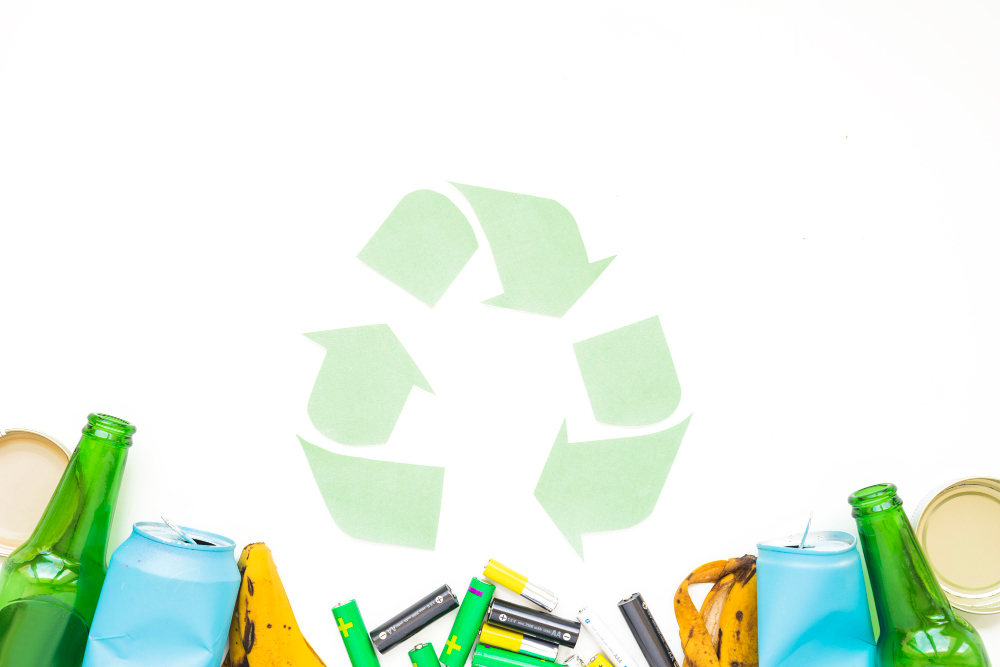
Table of Content
How to Calculate Recyclability of Your Products
In der heutigen Welt ist die Nachhaltigkeit von Produkten sowohl für Unternehmen als auch für Verbraucher ein entscheidender Aspekt. Die DIN EN 45555 bietet einen umfassenden Rahmen für die Bewertung der Recyclingfähigkeit von energiebezogenen Produkten (ErPs). Dieser Blog wird sich mit den in der Norm beschriebenen Methoden befassen und dabei speziell auf die Recyclingfähigkeit und deren effektive Berechnung eingehen.
Verständnis der Recyclingfähigkeit
Recyclingfähigkeit bezieht sich auf die Fähigkeit eines Produkts oder seiner Komponenten, nach dem Erreichen des Endes seiner Lebensdauer (EoL) in neue Produkte, Materialien oder Substanzen umgewandelt zu werden. Dieser Prozess schließt die Energierückgewinnung aus, bei der Abfälle zur Energiegewinnung verwendet werden. Das Hauptziel ist es, die Menge an wiederverwendbarem Material zu maximieren und somit Abfall und Umweltauswirkungen zu minimieren.
Wesentliche Aspekte der Bewertung der Recyclingfähigkeit
Die DIN EN 45555-Norm hebt mehrere Aspekte der Materialeffizienz hervor, die für die Recyclingfähigkeit relevant sind:
1. Verlängerung der Produktlebensdauer: Die Gestaltung langlebiger Produkte reduziert die Häufigkeit der Entsorgung und den Bedarf an Recycling.
2. Wiederverwendung von Komponenten: Identifizierung von Teilen, die in anderen Produkten ohne zusätzliche Verarbeitung wiederverwendet werden können.
3. Recycling von Materialien: Sicherstellung, dass die in Produkten verwendeten Materialien am EoL-Stadium effektiv getrennt und recycelt werden können.
Faktoren, die die Recyclingfähigkeit beeinflussen
Um die Recyclingfähigkeit eines Produkts zu bewerten, sollten folgende Faktoren berücksichtigt werden:
• Gestaltungseigenschaften: Die Struktur, Materialzusammensetzung und Montage des Produkts haben erheblichen Einfluss auf seine Recyclingfähigkeit. Beispielsweise sind Produkte mit leicht trennbaren Teilen typischerweise besser recycelbar.
• Entfernung von gefährlichen Stoffen: Identifizierung und Entfernung von gefährlichen Komponenten oder Materialien, die den Recyclingprozess behindern könnten.
• Effizienz der Recyclingprozesse: Die Effektivität der aktuellen Recyclingtechnologien bei der Verarbeitung der im Produkt verwendeten Materialien.
Schritte zur Berechnung der Recyclingfähigkeit
Die DIN EN 45555-Norm bietet eine schrittweise Methode zur Berechnung des Recyclingfähigkeitsgrades eines Produkts. Hier ist eine vereinfachte Anleitung basierend auf der Norm:
Definieren Sie das Referenz-EoL-Behandlungsszenario: Skizzieren Sie die Prozesse und Schritte, die für die EoL-Behandlung des Produkts erforderlich sind. Dies umfasst Entgiftung, Sortierung und Recyclingoperationen.
Identifizieren und bewerten Sie Gestaltungseigenschaften: Erstellen Sie eine Checkliste zur Bewertung des Designs des Produkts in Bezug auf die Recyclingfähigkeit. Berücksichtigen Sie Faktoren wie die Demontagefreundlichkeit und die Kompatibilität der Materialien mit Recyclingprozessen.
Bestimmen Sie Recyclingfaktoren: Berechnen Sie für jedes Teil oder Material des Produkts seinen Recyclingfaktor. Dieser Faktor reicht von 0 bis 1 und gibt den Prozentsatz des Materials an, der erfolgreich recycelt werden kann.
Aggregieren Sie die Behandlungseffizienzen: Multiplizieren Sie die Effizienzen jedes Behandlungsschritts, um den gesamten Recyclingfaktor für das Produkt zu berechnen. Dies beinhaltet die Bewertung des Outputs jedes Behandlungsschritts im Verhältnis zu seinem Input.
Für weitere detaillierte Informationen besuchen Sie die DIN-Webseite.
Wie kann ComplyMarket Ihnen helfen, den Recyclingfähigkeitsindex Ihrer Produkte zu berechnen?
Wir haben eine hochmoderne Technologie entwickelt, die künstliche Intelligenz verwendet, um komplexe mathematische Gleichungen zu simulieren und uns zu ermöglichen, den Recyclingfähigkeitsindex in nur wenigen Minuten und gemäß den Anforderungen der EN 45555 zu berechnen. Geben Sie einfach so viele Informationen wie möglich ein, und unser Tool berechnet den Recyclingwert Ihres Produkts.
Kontaktieren Sie uns jetzt für eine Demo.
Share with your community
Comments
Leave a comment or ask a question


